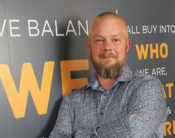Manufacturing executives are often like firefighters, constantly snuffing out one crisis after another. While attending to these daily urgencies is necessary, it also prevents manufacturing leaders from stepping back and guiding the strategic direction of their companies. Are they pursuing the most profitable goals? If not, why not? Are their operations efficient, operating in the best way possible? How can they assess whether things are going “right” and where improvements could be made? Where do they want to take the business? And how do they get there?
Add to that the fact that revenues are exceptionally robust for many manufacturers. Most respondents to the most recent State of Manufacturing® (SOM) survey conducted by Enterprise Minnesota reported an “almost surreally high level of optimism with expectations of record revenues, record profitability, record-level of investment in their companies, and increased wages.” While these are undoubtedly good things, they don’t slow down the daily fires—they add to them. To cope with these conflicting pressures, many executives are working with Enterprise Minnesota to assess their company’s strategic health at multiple levels.
“We offer six assessments designed to meet each organization’s current needs and questions,” says John Connelly, vice president of consulting and center director at Enterprise Minnesota. “Each assessment area is a starting point, but they are all interconnected. So, an improvement in one particular area can lead to improvements in other areas.”
The assessments include:
- Finance, a broad category that can cover many areas, and may consist of financial analysis to help an organization understand patterns in its financial health, as well as where its finances are trending.
- Enterprise Value determines a company’s current value and the significant factors that could affect it.
- Quality Management System (QMS) compares an organization’s practices to ISO standards.
- Lean/Continuous Improvement examines ways to make operations more efficient and agile.
- Leadership analyzes an executive team’s skill set and strengths and identifies gaps.
- Revenue Growth includes many angles, such as mapping out improvements to increase revenue or steps to staking out a stronger competitive advantage.
Which assessment a company chooses can be driven by market conditions, the maturity of the company, or a host of other factors. “In the last few years, we saw a lot of interest in the Quality Management System assessment because of the ISO 9001 upgrade,” Connelly says, adding that Lean assessments have increased in popularity due to the ongoing worker shortages. “Lean identifies ways an organization can work smarter, more productively and more efficiently.”
An assessment is just the beginning
Tom Pesch considers an Enterprise Minnesota assessment a health check-up for his business. Pesch is vice president of operations at Pinnacle Climate Technologies, a manufacturer of heating, cooling, and ventilation solution products in Sauk Rapids. “The doctor can tell you that you need to eat better and exercise, but the challenge is actually changing your habits. The assessment is only as good as what you do with it.”
Pesch knew Pinnacle had strong operations but also knew there was room for improvement. So, he contracted with Enterprise Minnesota for a Lean assessment, funded through the State of Minnesota. “We thought a fresh set of eyes could help us identify opportunities and prioritize our efforts at getting more efficient, especially with our material flow, inventory, and warehousing,” Pesch says. “Although everyone works hard and works well, that only gets you to a certain point.”
Enterprise Minnesota annually conducts between 45 to 60 manufacturing operations assessments throughout Minnesota. The process for each is similar: After gathering data through interviews and employee surveys, an Enterprise Minnesota consultant reviews operational metrics and then proposes action items created to help the company define and reach its goals, including resources needed and any outside effort that may be required.
Like Pinnacle, Straub Design of New Hope was keen on improving the efficiency of its operations. A manufacturer of industrial automation equipment that serves many segments including the automotive, electronics and energy industries, Straub is on a process improvement journey and knew it could do better.
“Straub’s business is focused on tape,” says Paul Ebnet, the company’s president and CEO. “We make machines that apply tape automatically to a variety surfaces. Everything is about speed and accuracy for our customers, so generally the faster the better.”
But before you can go faster, you have to make sure your vehicle is in order. After first taking the time to improve internal processes, like sales and finance, Straub turned to Enterprise Minnesota to get started on its journey to Lean. According to Ebnet, “Our team had a genuine level of interest in going through the Lean assessment, rather than a fear of what would be uncovered. There was a sense of ‘What can we learn from the assessment? How can we get better?’”
What you need to hear, not want to hear
An assessment is the starting strategy that a company can use to reach its goals in any of the six broad areas described above, and there is frequent overlap. “Assessments really help a company drill down and get specific about where they want to go,” says Connelly. “But it’s important to remember that an assessment isn’t a correction of an individual problem. It’s offering a strategy perspective on certain facets of an organization.”
“The assessment process was very well-organized,” says Ebnet. “We received an executive summary, a scorecard with an overview of our results and a list of recommendations that we reviewed with the executive team, the board and the entire staff.”
Ebnet was already aware of some of the challenges exposed by the assessment, such as a limited facility space constraining the company’s growth. “We didn’t have a lot of space to move around; it was hard to lay out raw materials. If we had to flex to handle input, there was no place to go. We had a small warehouse a few miles away and had to transport goods back and forth.”

Through interviews and confidential surveys, the Lean assessment also uncovered an issue that Straub’s executive team hadn’t fully appreciated before. “Our team surfaced some issues that we didn’t know were so important to them, like inventory availability and accuracy,” says Ebnet. “Discovering things like that was a side benefit of the Lean assessment, and now we’re working with Enterprise Minnesota to improve our inventory process because we know it’s important to our team. We wouldn’t have been quite as focused on this area without going through the assessment. That unfiltered feedback was very important for us to hear.”
Learning the unexpected results in an assessment is helpful, but no one says it’s an easy thing to hear. “We needed to look at some different practices that might take us to another level, but there’s a sense of pride too,” says Pesch. “So when someone comes in and says you could do a lot better, you have to be willing to not take it personally. The assessment told us what we needed to hear, maybe not what we wanted to hear. The important thing is recognizing and acknowledging the opportunities, taking actions that move us forward, and continuing to sustain the improvement momentum.”
A trusted partnership
Manufacturers will take feedback from an assessment and turn it into action if they believe the expertise and judgment of the person delivering the assessment results. That’s why each of Enterprise Minnesota’s 13 assessment consultants has varied, deep and practical experience in manufacturing. “Our consultants have been managers or some type of decision maker in a manufacturing company themselves,” says Connelly. “That real-world experience is very important for bringing an applied perspective and for recommending paths forward based on the assessment and the company’s vision. It’s really about putting themselves in the client’s shoes so they have a trusted advisor in us.”
Business development consultant David Kvasager recalls one company that invested in the Lean assessment, much to the skepticism of its owner. “As part of the assessment process, our consultant interviewed the owner,” says Kvasager. “The owner was clear that he thought the assessment was a waste of time, and he was skeptical of how much our consultant could really understand about his company. By the time our consultant was done asking questions and discussing challenges, the owner was so impressed with his knowledge that he offered him a job! And we’re still working with that manufacturer.”
“Our outside perspective puts structure to things that companies often feel but can’t or don’t articulate,” says Connelly. “It’s one thing to believe ‘we need more sales,’ but it’s another to learn how to find more customers, or how to expand to another market, etc. The assessment becomes that strategy.”
That strategy is also critical for building consensus on the best path forward. Though there may be agreement on an end goal, there are typically many ideas of the right way to get there. “Organizations often have a lot of energy for improving and lots of individual perspectives on how that can happen,” says Connelly. “Unifying that is important; an assessment can take input from across an organization and present a unified way forward toward benefits. And that’s powerful.”
For example, one organization’s QMS assessment spotlighted overlap and inconsistency in application of standards. “It was ISO certified, but it also operated under the Entrepreneurial Operating System (EOS) model, so our assessment found that it was confusing for employees to figure out which standards to apply in different situations,” says Joel Scalzo, an Enterprise Minnesota business development consultant. “We are now working with the company to merge those standards into a business management system that works best for them.”
Post-assessment: When the real work begins
An assessment is a snapshot of a company at a certain point in time, and it helps zero in on the areas that matter: Where are the critical gaps that should be closed? Where are the best opportunities for improvement or growth? What strengths haven’t been fully maximized?
The real work—and the change—comes after the assessment is delivered: It’s up to each manufacturer to decide on the exact tactics, timelines, and role responsibilities for its roadmap to improvement. Some organizations move forward on their own, while others engage Enterprise Minnesota for further training, support and strategy planning.
No matter what, the assessment should serve as a continuous reference point and not something that’s stowed away in a drawer. Connelly noted one company that participated in a Lean assessment nearly three years ago still relies on the findings.
“They’re using it to plan out improvements all the time; they look at what they’ve done, what still needs to be done, and what needs to be changed. It’s really an anchor point that they can always revisit.”
Pinnacle has continued to similarly leverage its own Lean assessment, which pinpointed the need for more facility space to maximize efficiency and productivity. As the move-in date neared, Pinnacle went back to the assessment to review some of the more specific recommendations. These included real-time payment systems to improve efficiencies, skills development of key staff, and conducting a Lean Principles awareness training and 5S simulation training for key employees. Pesch noted that these will enhance the company’s ability to be more flexible and responsive to customers’ needs.
“We’ve sent a number of people to trainings and seminars by Enterprise Minnesota, and what they learn has been well received,” he says. “Later this year, we plan to implement an RF/barcode system in our warehouse that was recommended by the Lean assessment, and we plan to extend our vertical integration by in-sourcing some key subassemblies which will save freight, lead time, and warehouse space. We are heading in the right direction but still have a lot of work in front of us.”
A journey, not a destination
For Pinnacle, the results of the Lean assessment helped them leverage their strong talent and work ethic even further. “We found we had a lot of waste in our Sauk Rapids operations and warehousing because we were spread out between two, sometimes three sites,” says Pesch. After Pinnacle moved to a larger facility, it chose to engage with Enterprise Minnesota again on determining the building’s layout for optimizing material flow. “A consultant worked with us throughout three or four sessions, looking at our layout options and working with our team on flow ideas and things like where to put the warehouse, fabrication shop, and doors and aisles,” says Pesch. “That exercise was really worthwhile and something we implemented per the design we came up with.”
He’s excited about the results they expect to see from the implemented Lean concepts, as well as from the more efficient facility layout. “For the lines we’re making changes to, it’s probably up to a 20 percent throughput increase. We only recently implemented the improvements, but we’re optimistic about what we’ll see.”
After Straub Design purchased a new building for its expansion, the leadership team discussed working with Enterprise Minnesota on designing the building’s layout. After some debate as to whether Straub could manage the configuration on its own, the company ultimately decided to work with Enterprise Minnesota to get a valued, outsider perspective. Straub Design team members put together different layouts according to the needs and goals of Straub, with the final design being a combination of what the consultants recommended along with some adjustments by the Straub team.
“We were moving to a building that was about three times bigger, and it was really important to follow our Lean objectives,” explains Ebnet. “We wanted to move in and start being productive right away, plus we learned from the assessment that the team needed improvements on the inventory side. Working with Enterprise Minnesota to figure out both the layout and the inventory proved to be very helpful. It was like we got a two-for-one on that process.”
Based on the improved layout and inventory accuracy, Straub aims to achieve a substantial reduction in cycle time. “We’re starting to recognize benefits from a productivity standpoint, and better productivity will also benefit our customers because we can deliver products more quickly and be better at setting delivery dates,” Ebnet says.
Whatever a company’s goals, reaching them is a continual journey. With the help of an outsider’s perspective and a good strategy, more Minnesota manufacturers can take specific steps toward improvements that will tamp down some of those daily fires that take up time and energy. “Enterprise Minnesota has lots of good resources and knowledge because they work with so many organizations,” Ebnet says. “They’re good listeners, and they ask good questions, and they have a good baseline for what makes a great operation.”
…
Featured story in the Spring 2019 issue of Enterprise Minnesota magazine.


